
Source: Shutterstock
Prior to keynoting the PACA conference in Miami, Maria Kessler, president of the PACA Association, asked me if I had read a recent post by Fred Wilson entitled “The Golden Triangle.” We were deep in conversation as I was seeking an alternate title for my next book that identifies the divide between brands, information, and consumers and how we can, as social architects and engineers, build the bridges between people, contextual relationships, and technology. While “The Golden Triangle” isn’t a contender for the name of the next book, it did get me thinking.
In his brief, but thought-provoking article, Wilson identified the state of engagement, connectivity and interaction. And through a collaborative conversation in the comments thread, new opportunities for future innovation also surfaced.
As Fred Wilson observed, “I can’t remember who said it but at least I remember what was said: The three current big megatrends in the web/tech sector are mobile, social, and real-time. I like to think of this as the golden triangle.”
Wilson continued, “The iPhone is the poster child of mobile. Facebook is the poster child of social. Twitter is the poster child of real-time. But it is what happens inside the golden triangle that is really interesting to me.”
His post served as a social object that demonstrated the “golden triangle” in action. It inspired real-time conversations across multiple social networks in and around his blog post, hosted on Web-based platforms on mobile and desktop devices and systems. This social object served as the catalyst for revealing what transpires within and what can potentially materialize within this Golden Triangle.
While it’s a concise and clear visual, it’s easy to misinterpret the true opportunity rife within the triangle. Tim O’Reilly, one of the most prolific and visionary leaders driving the evolution of the Web, left the first and among the most astute comments in response to Fred’s post:
Seems to me that Fred’s golden triangle applies to business as well, I’m afraid. There are certainly other trends at work that apply to business, but if you look at real-time for instance, it’s at the heart of Google’s ascendancy over Yahoo! and Microsoft in Search (real time ad auction). It’s at the heart of Wal-mart’s success (real time supply chain).
I will say that if you interpret these trends narrowly, you will miss a lot of stuff that these words are pointers to. Mobile does not just mean “mobile phone.” It means encountering computing out and about in the world. Dig deep, and you will see many other ways that computing is becoming mobile and ubiquitous. Similarly, if you think social is limited to “social networks,” you’ll miss all the other ways that social has been bubbling up over the years (e.g. Google’s pagerank was an early social computing breakthrough).
Like a lot of simple formulations that cover a lot of ground, this one is good because it anchors the corners of a very wide net. Fish in that net and you will find a lot, even for non-consumer-facing businesses….
Paul Diagle contributed insight to the dialogue that I also feel is worthy sharing as it brings perspective and context to the triangle
I totally agree– they will converge. But I do think the 3-screen concept will prove a lasting one from a practicality standpoint. We’ll go from having a TV, PC and phone to having a big screen, small screen and pocket screen. Currently our 3 screens represent competing platforms. Tomorrow they’ll be 3 complementary devices that each have certain advantages based on the activity we’re engaged with at a given moment. Pocket screens = single-user. Small screens = work stations. Big screens = group-experience stations. Otherwise their capabilities will be pretty much identical. All these screens will have an IP address and communicate inter-operably. Imagine commanding a 100 ft stadium display through your pocket screen. I totally agree… size will only matter in the number of users that need to experience the screen at a given moment. I think this is inevitable. The big question is how long it will take us to get there.
His point is very interesting as we are already starting to realize and benefit from the technology advancement in platforms, networks, and inter-connectivity that unite two of the three screens. For example, Yelp’s Monocle is a new augmented reality application that connects the Yelp Web-based network, the internal iPhone 3GS compass and camera, and your current position in the real world.
Google Wave joins distributed applications in a real-time collaborative environment that promises to connect people across platforms on two of the three screens.
The third screen, the television, as well as the elusive “living room,” represent the last mile that will link people, social objects, centralized data, and relationships where the Web has mostly been absent and definitely unexploited.
Twitter is giving us a taste of what engagement and communication on three screens looks like as well as illustrating its possibilities (mobile, PC, and TV). Network television and broadcast news continue to experiment with dedicating a portion of the screen to displaying viewer commentary via Twitter. However, watching unfiltered tweets fly across the screen is less useful than it is promising.
Some televisions feature wifi and ethernet connectivity, such as the new Samsung LED series, and include Yahoo! TV Widgets that enable viewers to simultaneously monitor their Twitter stream and also tweet while watching TV.
The Golden Triangle
As we traverse across the three screens, let us not forget the ties that bind us. Services and products aside, it is the construct of the Golden Triangle that facilitates a new genre of content production, distribution, and consumption as well as social interaction and collaboration. It’s borderless, untethered, and practically device agnostic.
“You” are at the center of the Golden Triangle and remain connected to your social and professional graph via devices, applications and networks hosted on mobile and Web-based (cloud) platforms. We are becoming increasingly less dependent on resident systems that lock us into one ecosystem and as such, relying on services that become ubiquitous. For example, you can access your social graph and corresponding data on Facebook from your mobile device or PC, regardless of location. With services such as Google Docs and Apple’s Mobile Me, your data and applications are also available to you whenever, wherever.
The governing corners or angles within the Golden Triangle (mobile, real-time, and social) are connected by content, relationships, and an expansive online ecosystem. It is also this evolving class of hardware devices that serves as the enabler to publishing, productivity, and access. Everything combined, we are witnessing a complete transformation in workflow, behavior, and communication, and it is forcing the rapid and inevitable evolution of every industry and how each connects to their supporting communities.
While technology indeed plays a factor in serving as our social OS and the conduit for interaction, it also facilitates how we forge and nurture relationships. It is that activity within the Golden Triangle and the diverse cultures, behavior, and socio-economic systems that ensue and emerge that fascinate me. I find myself continually coming back to “The Human Network” to describe the social economy that shapes activity within the triangle.
Connect with Brian Solis on:
Twitter, FriendFeed, LinkedIn, Tumblr, Plaxo, Posterous, or Facebook
—
Click the image below to buy the book/poster:
pr pr+2.0 pr2.0 public+relations marketing advertising interactive social+media socialmedia brian+solis social media media2.0 media+2.0 2.0 smo social+media+optimization marcom communication publicity advertising expert interactive spin brand branding guru social+architect
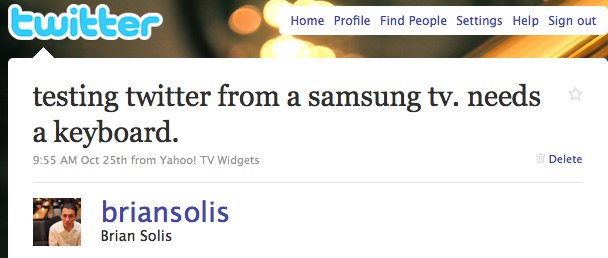
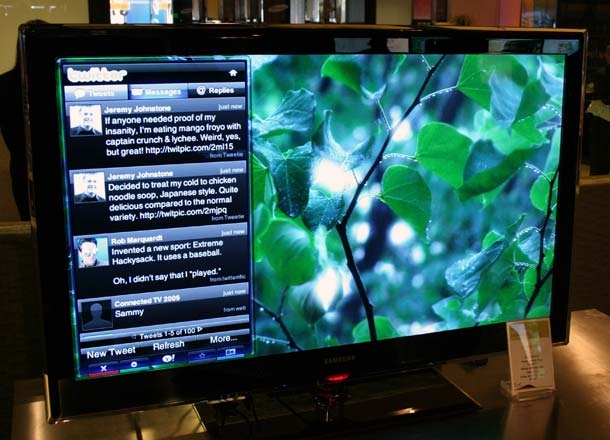
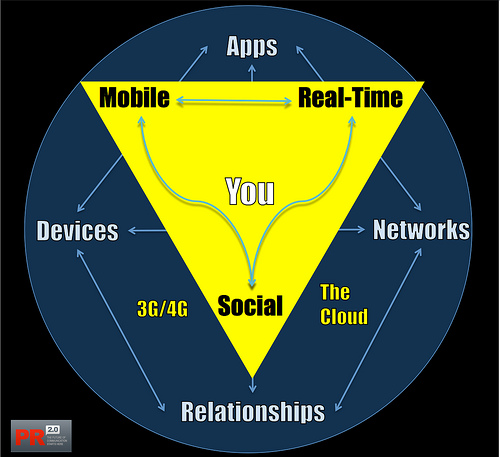



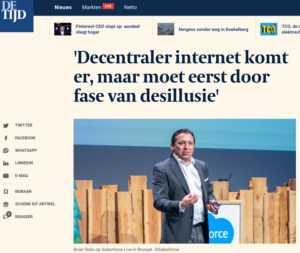
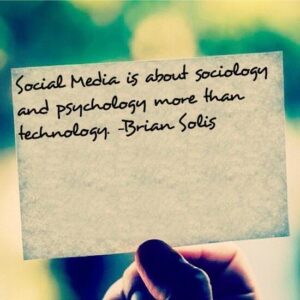


Excellent article. Will be read, re-read, saved, and forwarded.
Thanks William…
Brian,
I was just inspired by a series of posts to write up a prompt – “Is Twitter A Complex Adaptive System?”, which has sparked some lively conversation in the comments area. The post hits on a lot of things you're talking about here. Would love to get your thoughts on this.
http://emergentbydesign.com/2009/11/17/is-twitt…
find me in the twitterhive @venessamiemis
Will take a look. Thanks Venessa.
Nice breakdown Brian
Thanks Jeremiah…
Excellent post.
Great post. Love your analysis.
I love TimOReilly 's macro view – I think we are working towards seamlessness – between the screens and the human+tech interface.
I almost see your illustration as a dynamic and evolving one – where the lines between the triangle and the tech (blue) are not so stark. They overlap and evolve each other – and result in the Internet Operating System ( a Tim O Reilly term) – much like the 2D images from each of our eyes result in 3D images in our brain.
I already see a lot of seamlessness and overlap .
My comment is perhaps cryptic but I will probably blog abt it soon
good summary Brian. book title idea: the network is the human
“The governing corners or angles within the Golden Triangle (mobile, real-time, and social) are connected by content, relationships, and an expansive online ecosystem.” Exactly! At the end of the day, it's important to have a solid product that incorporates these. Without that central element, you've got nothing but buzzwords.
I've seen a lot of different websites around the valley lately, but one that implements all three of these facets very well is http://YourVersion.com, the real-time discovery engine. Our central element: keep up on your interests by typing in keywords and discover latest news, blogs, webpages, tweets and videos. Realtime corner: The most relevant, current results are brought up. Social corner: the social element is built in, so you can I can share (tweets, facebook, or email) content that you discover on any webpage (and there's an awesome FF toolbar as well). Mobile corner: with the iPhone app, you can access any of this content on the go and fully use the service even without a computer.
Anyway, I highly recommend YourVersion on the browser and on mobile. I've discovered tons of alternative outlets for finding my news and keeping up with my interests. I think that companies that use this trifecta to deliver on their central product (in our case, a discovery engine) are in a strong competitive position.
Great post, Brian. Would love your feedback on http://www.YourVersion.com. Thanks!
-Melody
Brian, An absolutely well conceived and written piece. Insightful and thought-provoking. Good job.
Bob, thank you…really appreciate the support!
Brian, An absolutely well conceived and written piece. Insightful and thought-provoking. Good job.
Brian, An absolutely well conceived and written piece. Insightful and thought-provoking. Good job.
Bob, thank you…really appreciate the support!
Well , the view of the passage is totally correct ,your details is really reasonable and you guy give us valuable informative post, I totally agree the standpoint of upstairs. I often surfing on this forum when I m free and I find there are so much good information we can learn in this forum!
multi-cavity
I really like this type of Shoes too, can you help me look at which
ugg boots
http://www.boots-outlet.us
ugg gissella boots
http://www.uggs-outlet-store.com/ugg-gissella-b…
ugg elsey boots
http://www.uggs-outlet-store.com/ugg-elsey-boot…
nike dunk
http://www.discount-nike-dunk-shoes.com
ugg classic tall stripe cable knit boots
http://www.uggs-outlet-store.com/ugg-classic-ta…
ugg boots outlet
http://www.uggs-outlet-store.com
winter boots
http://www.bootsforcheap.us
coach boots
http://www.discount-coach-outlet.com/coach-boot…
coach leather
http://www.discount-coach-outlet.com/coach-leat…
Nike Dunk mid
http://www.discount-nike-dunk-shoes.com/Nike-Du…
ugg boots
http://www.bootsforcheap.us
Useful information.
Understand thank you very much. http://www.thonginphone
Nice article